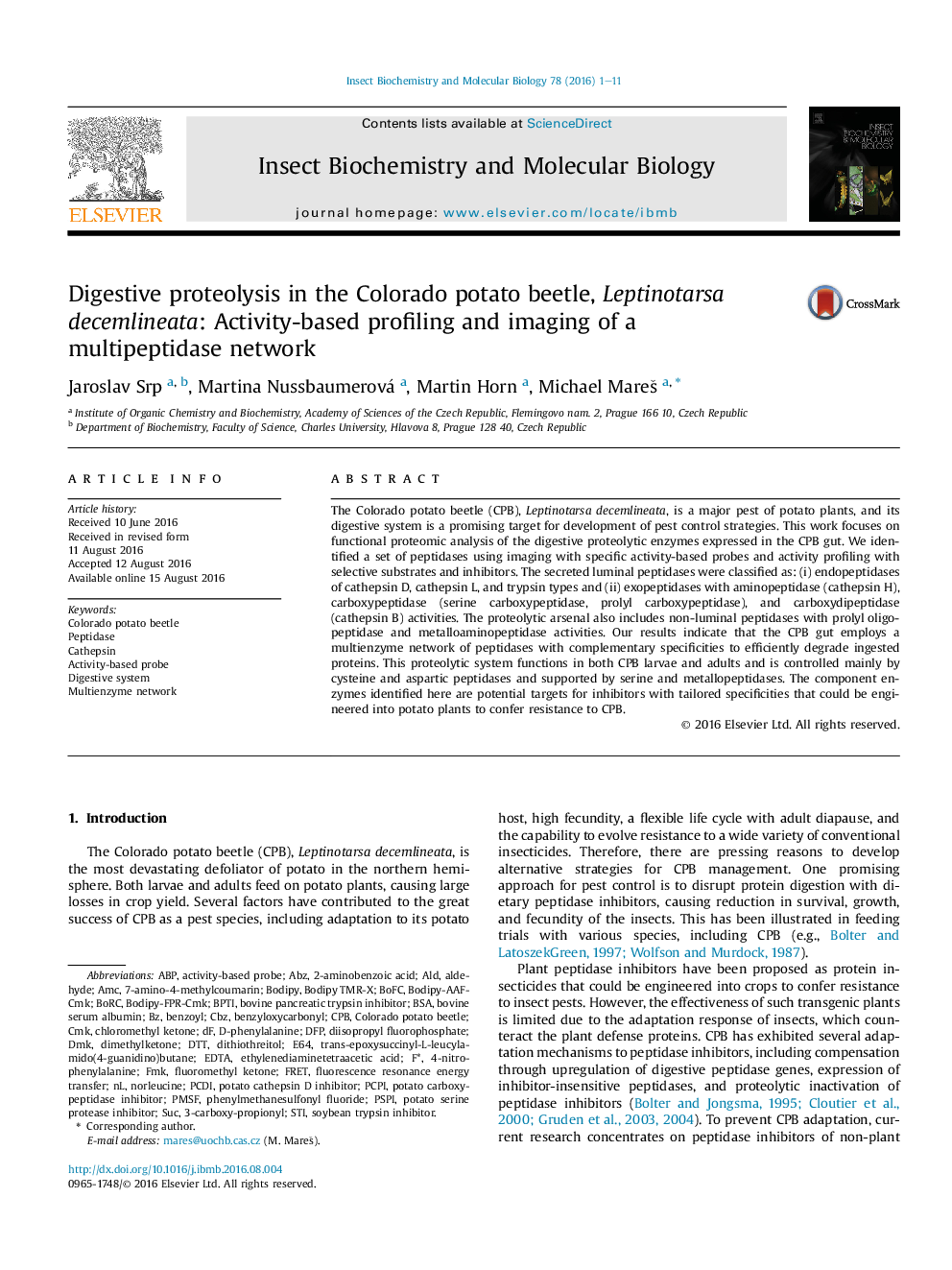| Article ID | Journal | Published Year | Pages | File Type |
|---|---|---|---|---|
| 1981917 | Insect Biochemistry and Molecular Biology | 2016 | 11 Pages |
•A functional proteomics approach was used to map digestive proteolysis in the Colorado potato beetle (CPB).•A multienzyme network of endo- and exopeptidases with complementary specificities operates in the CPB gut.•Cysteine and aspartic peptidases control digestive proteolysis in both CPB larvae and adults.
The Colorado potato beetle (CPB), Leptinotarsa decemlineata, is a major pest of potato plants, and its digestive system is a promising target for development of pest control strategies. This work focuses on functional proteomic analysis of the digestive proteolytic enzymes expressed in the CPB gut. We identified a set of peptidases using imaging with specific activity-based probes and activity profiling with selective substrates and inhibitors. The secreted luminal peptidases were classified as: (i) endopeptidases of cathepsin D, cathepsin L, and trypsin types and (ii) exopeptidases with aminopeptidase (cathepsin H), carboxypeptidase (serine carboxypeptidase, prolyl carboxypeptidase), and carboxydipeptidase (cathepsin B) activities. The proteolytic arsenal also includes non-luminal peptidases with prolyl oligopeptidase and metalloaminopeptidase activities. Our results indicate that the CPB gut employs a multienzyme network of peptidases with complementary specificities to efficiently degrade ingested proteins. This proteolytic system functions in both CPB larvae and adults and is controlled mainly by cysteine and aspartic peptidases and supported by serine and metallopeptidases. The component enzymes identified here are potential targets for inhibitors with tailored specificities that could be engineered into potato plants to confer resistance to CPB.
Graphical abstractFigure optionsDownload full-size imageDownload high-quality image (183 K)Download as PowerPoint slide
